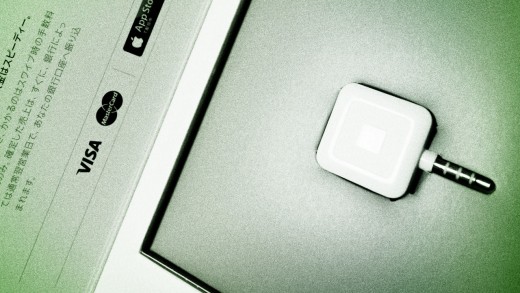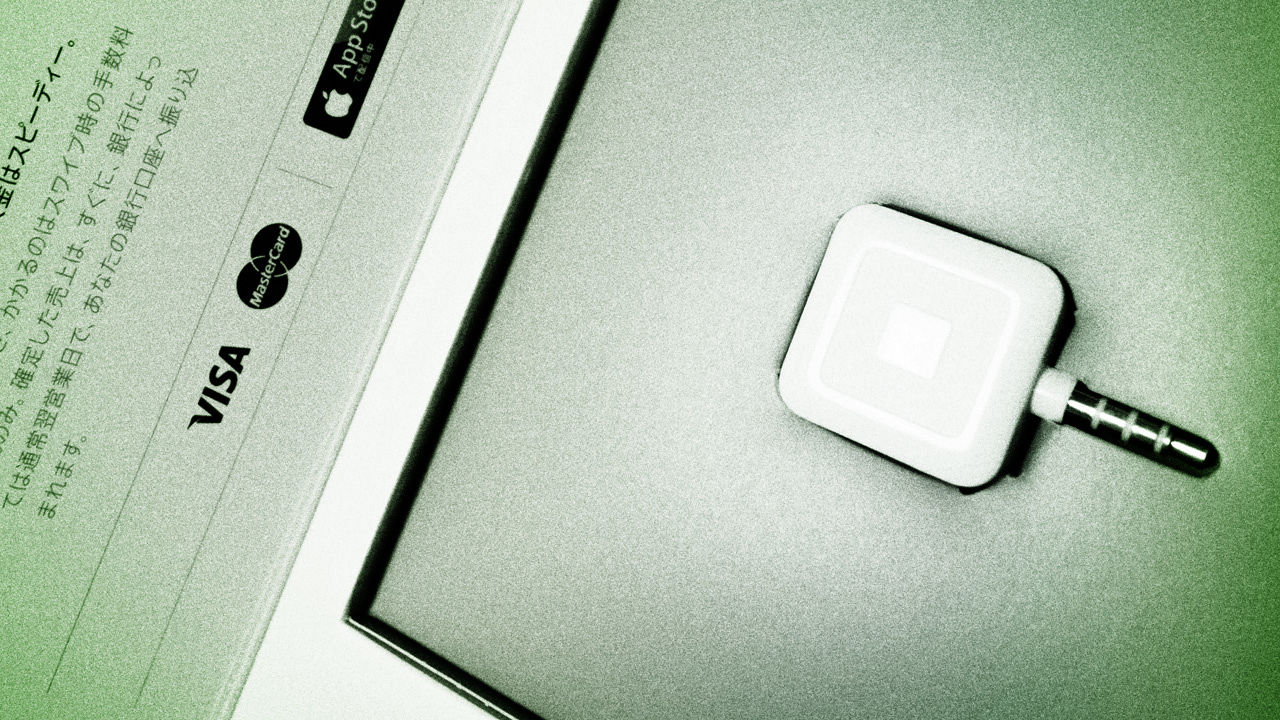The 4 Myths About square’s IPO submitting
ultimate 12 months, I spent significant time inside Jack Dorsey’s payments company. What I learned tells us the best way to read its IPO submitting.
October 16, 2015
This week sq. filed for its lengthy-rumored and lengthy-anticipated IPO, and the general public finally obtained a have a look at how square’s business is actually performing. all of the pundits, nameless sources, and leaked paperwork could now be considered in light of the actual info. Did sq.’s S-1 prove the press had served up some scolding cups of claim chowder? now not precisely. sq.’s story has at all times been a nuanced one that confounded simplistic narratives, and its business may also be looked at from a variety of views. the company reported revenue of $560 million for the primary 1/2 of 2015, up 50% all through the identical period closing 12 months, however it also recorded a $seventy eight million internet loss, following losses of $154 million in 2014 and $104 million the 12 months prior. It has built out a growing funds processing industry however has made product stumbles alongside the best way in looking to expand its portfolio of services and enhance margins. Its excessive-profile maintain Starbucks proved to be dear, but was it severely expensive? Like most IPO prospectuses, sq.’s S-1 presents a portrait of a promising future which may be derailed by way of significant dangers.
within the spring of 2014, amid rumors of sq. burning cash at a dangerously excessive rate and being an acquisition goal for Apple or Google, I had the opportunity to spend time with sq. CEO Jack Dorsey, most of his senior management staff together with CFO Sarah Friar, and square’s board contributors in an effort to try to understand the company and its future. What I stated on this characteristic in August 2014—in short, that sq. had constructed a rising funds industry, with quite a lot of promising initiatives, and used to be not on the breaking point despite some dire outdoor predictions, but in addition that there were material risks—dissatisfied square. but because the final journalist to have that roughly deep get admission to into the company, the insights shared right through that time can lend a hand inform have in mind the S-1. After studying sq.’s submitting, I revisited my story and my reporting. listed here are 4 myths to keep in mind about the company because it embarks on the subsequent leg of its experience.
fable #1: square shouldn’t be a funds firm
for much of square’s historical past, the corporate has been trying to distance itself from being labeled a funds-processing company. Jack Dorsey, the company’s cofounder and CEO, has stated countless instances that he doesn’t consider square a funds company—that he and his group “at all times knew [payments were] no longer our core trade . . . We knew the actual industry was once across the information.” Board member Vinod Khosla spent time convincing me last yr that Dorsey aimed from the outset to build a trade around its information, not funds, even pulling up Dorsey’s authentic deck to prove it to me. “We’ve always seemed at the firm as this better thing, and if other people assume we’re doing funds, great, that’s a purple herring,” he instructed me. (This perspective continues to conform relying on who you discuss to, and when.)
the problem is, at present, sq.’s industry is almost fully depending on funds earnings. in step with its S-1, sq. generates around ninety five% of its earnings from payments and level-of-sale products and services. There are cogent the reason why Dorsey didn’t want sq. branded a mere payments processor. Many trade experts argue that funds are a “commodity recreation,” as Intuit CEO Brad Smith has stated. although sq. collects charges for each transaction it allows, that trade is subject to fluctuating margins, executive legislation, negotiations with larger-scale merchants (like Starbucks), and square’s evolving relationships with monetary intermediaries.
There’s two methods to take a look at this supposed “purple herring.” On the one hand, it signals that sq. hasn’t come even with reference to creating its “core” trade through Dorsey’s own definition. This either implies that square has a ton of untapped possible going forward, or the pessimistic view is that it’s been incapable of tapping into this possible to any vast degree over the last six years.
What i think is some distance more attention-grabbing, although, is that square managed to build a swish, cherished brand despite the fact that the corporate mainly handles cost processing. It speaks to Dorsey’s items that he was able to gin up a strong, client-facing popularity for square even though the company would earn cash from a more undertaking-centric industry adaptation. To him, sq. isn’t about financial intermediaries and EMV-compliant hardware; it used to be about reinventing commerce and empowering small companies. “pleased with what square stands for: inclusion and empowerment,” Dorsey tweeted this week. This message, together with the corporate’s glossy design, has given square a model that clients love, something traditional payment options companies akin to NCR and Verifone could by no means attain.
fantasy #2: sq. had its technique discovered from day one
in step with square’s S-1, more than 2 million dealers account for 97% of its gross fee extent; if square could upsell these retailers on better-margin products and services, similar to instrument to deal with analytics or invoices, it might set up a much more beneficial and sustainable industry in comparison with its funds processing. however at this level, it’s all still TBD.
Many of these new products fall underneath square’s “tool and data” division, and as Jason Del Rey at Re/code writes, this is the “the most important” unit “hiding” in square’s IPO filing. Jason’s completely right: This unit is a very powerful to sq.’s future. but I respectfully disagree that it’s by some means hidden.
Frankly, it’s all sq. has been speaking about on account that 2014, if not earlier. the company spent nearly all of its time pitching me on the concept that square desires to be “the relevant running system of your small business,” as engineering head Gokul Rajaram phrased it. When i found that not directly unconvincing, sq. has due to this fact tried to hammer residence equivalent messaging in a feature on BuzzFeed past this 12 months, and once more in a the big apple occasions profile round that point. the only thing hidden, actually, is the income from these merchandise; as a lot as sq. has overvalued these small and medium industry products and services, they accounted for just 1.6% of income in 2014, and about four.25% for the primary 1/2 of this year.
In that experience, considering of sq. presently completely within the context of these new merchandise, as opposed to the company’s payments industry, is a bit like describing Disney through simplest specializing in its tiny Interactive video game unit, quite than the film, tv, and parks and hotels divisions that generate the overwhelming majority of its revenue. square’s new trade services are engaging relating to their greater margins, nevertheless it’s too early to assert how they’ll fare one day. much like funds processing, sq. is getting into highly aggressive markets with a wide selection of previous and new opponents. “Incorporating new technologies into our services and products may just require enormous expenditures and take substantial time, and we will not be a hit in realizing a return on these building efforts in a well timed manner or at all,” square’s S-1 notes. “There may also be no assurance that any new products or services and products we develop and provide to our marketers will succeed in vital industrial acceptance.”
so far, the company’s product rollouts have been hit and miss. sq. wallet, a digital wallet Dorsey pitched for years, failed to gain client adoption; its alternative, square Order, which allowed consumers to order ahead at native restaurants by means of an app, was once additionally panned. sq. has since killed both products. Its cash-boost application sq. Capital and peer-to-peer network sq. cash are each extraordinarily compelling merchandise, yet the former hasn’t but generated important revenue from the $225 million its developed to merchants, and the latter is a money-losing operation, though $1 billion has flowed through the provider. There are a slew of other services—Invoices, Open Tickets, Dashboard, Appointments, the checklist goes on—which are equally as promising, but will they change into large revenue generators?
whereas reporting on sq. final 12 months, what i found most complicated wasn’t sq.’s premise that it ought to provide incremental, value-added products and services to its retailers. slightly, the problem used to be that it became increasingly more troublesome to take into account what companies sq. would venture into and which ones it wouldn’t. the company’s considering felt haphazard, and that i kept listening to mixed alerts from executives or boilerplate explanations round how square’s strategy and vision hadn’t changed, best its tactics. I appreciated Dorsey’s transparency and humility when he talked to me in regards to the firm’s struggles to determine whether or not it should put extra emphasis on the patron or vendor side (which played into wallet’s struggles). I also valued the candor of square investor Roelof Botha, who did not mind acknowledging the corporate’s see-what-sticks means. “Are we going to nail each single thing we’re endeavoring to do now? in fact not,” he mentioned. “when you are batting a thousand on this trade, you’re now not pushing exhausting sufficient.”
nevertheless, i discovered it onerous from time to time to parse what the corporate used to be promoting. once I asked about the rumored sq. bank card, which we mentioned on after listening to from sources that sq. decided to cease its building in order to keep away from upsetting its financial companions, Dorsey wouldn’t go into small print, however he instructed me that sq. would now not kill a product because it may well be disruptive to its companions. yet a source very close to Dorsey and the board instructed me the precise reverse. square hardware lead Jesse Dorogusker told me the corporate believes its retailers need assistance with the whole thing from “turning in arugula to preserving the lights on to upgrading their Comcast web.” but would square in reality construct products to unravel these considerations? when I requested Khosla how I must interpret square’s evolving product portfolio, he told me in 2014, “if you question me, was once sq. [Capital] on the agenda four years ago? No. but which is finding out. A 12 months and a 1/2 in the past, would i’ve said Order was once an incredible business? No.” Khosla also informed me on the time that the company wouldn’t do payroll—ZenPayroll already does that beautifully, he stated, and sq. would companion with them—however with the aid of June of this yr, the corporate delivered a payroll product to its “ever-expanding choices,” as Forbes said the news.
square makes quite a few beautiful and well-crafted products and it is still determining the correct mix of which of them its clients need and on the way to make the company some huge cash. there isn’t any sin in that manner as long as the corporate can have the funds for to take action. No need to pretend otherwise.
delusion #three: square’s care for Starbucks was a complete waste
If there’s one factor critics pig-piled on after the sq. IPO submitting, it used to be the company’s partnership with Starbucks. The deal made sq. the processor for credit card transactions at heaps of Starbucks stores, and significantly ramped up sq.’s payment volume. but because the S-1 confirms, the deal ended up costing square tens of millions of dollars in transaction fees, because it agreed to decrease rates with the espresso chain that eliminated its margin. The deal has considering been described as a “bust” and a “large cash loser,” a partnership that “burned” sq..
whereas these are truthful assessments, none of that is in point of fact news. most of the numbers had been in the past mentioned, and square knew exactly what it used to be getting itself into. As we described in our dive into the topic ultimate yr, the company fundamentally noticed the partnership as a advertising and marketing funding for sq. wallet and the sq. brand. “It used to be lovely basic math—everyone involved within the deal knew exactly what the numbers had been,” one supply advised me on the time. “[The] price was once extremely excessive. but it made sense: as an alternative of spending X millions of dollars on advertising and marketing, the Starbucks deal legitimized this tiny startup. There was a major push in adoption.”
If there’s a silver lining in all of this, it’s twofold. First, it’s vital to note that buyers believed in square’s potential sufficient to spend this amount of dough. “All i will say is there was once a plan, a acutely aware decision to do the Starbucks deal, and we decided to position that wager—clearly no person pressured us to do it,” as Khosla informed me.
second, as so much because the Starbucks deal damage the company’s financials, the partnership will quickly come to an end, as the S-1 signifies. the company broke out its Starbucks numbers for instance how poorly the partnership contaminated its salary, but also to show that the infection would ultimately clear. “We consider it comes in handy to exclude Starbucks task to obviously express the impression Starbucks has had on our financial results historically,” the S-1 commentary reads. as soon as Starbucks transitions to another payments processor, square’s gross funds volume will cut back, however its trade will be more fit.
myth #4: square shares no duty for what’s written in regards to the firm
simply days after we printed our feature on square, the company released a weblog submit list the “top 10 myths” about the firm. It was once a confusing and oddly shielding put up that coated the whole lot from sq.’s security capabilities to its cellphone enhance heart. here at quick company, we weren’t exactly positive whether this put up was somehow geared toward us, as a result of although we had posted a number of important stories, we hadn’t propagated any of these so-referred to as myths. best one among its 10 bullet factors gave the impression related. The myths looked as if it would reply more to the most often unfavourable protection the corporate had received past within the 12 months. thus far, the company wrote that it is a myth that “sq.’s trade is struggling”:
like you, we’re a rising business. You make investments in your future, and so can we. We’re smartly-capitalized and placing our money to good use: investing in individuals and new products. stories that we tried to sell the company, or of a delayed IPO? False. We’re here for the long-term.
taking a look back, i’m not moderately sure what square was so sensitive about. there have been various legitimate questions concerning the firm’s merchandise (similar to pockets); its care for Starbucks; and the sum of money the corporate used to be burning. If the defensiveness used to be exclusively due to The Wall side road Journal‘s report a few potential acquisition of square, which other retailers stated to varying levels, then i am now not reasonably certain why Khosla informed me the story wasn’t a huge deal. “I don’t assume our target market concerned about The Wall side road Journal…we haven’t spent plenty of time [on it],” he mentioned. As for its “delayed IPO,” we also failed to document this, however sq. can also be splitting hairs, for the reason that firm had formed an audit committee and told its finance staff to arrange for an IPO. “[CFO] Sarah [Friar] made positive the finance workforce was once ready with the aid of the middle of 2013, although no banks have been ever hired,” one supply close to Friar instructed me closing 12 months.
reputable questions remain about square’s trade going ahead. indeed, the S-1 statement comprises many more possibility components associated with square—together with Dorsey simultaneously working some other public firm—than have ever been mentioned ahead of. predict the company to face a ways extra scrutiny as a public firm than it has as an individual one.
In July, sq. communications head head Aaron Zamost wrote a widely shared weblog submit on Medium about how the narratives swirling around Silicon Valley startups observe a definite and predictable pattern. Zamost primarily posits that no matter the truth of a company’s trade or efficiency, the united statesand downs of its notion within the press, often known as the hype cycle, are out of that company’s arms, and quite observe alongside a predetermined arc, compelled on by means of the tech media “like clockwork.” Zamost concludes through providing some helpful recommendation. He recommends that an organization coping with narrative woes is at an advantage specializing in its buyers, final humble and not forcing another story arc, and refraining from getting angry or taking a look defensive. whereas Zamost warns that “a negative story has nothing to do with you,” he also acknowledges, backwardly, a number of paragraphs later that “your organization isn’t excellent. You’ve made errors. It’s alright to own up to them…if what you are promoting is a good one and you know the way to manage the clock, your story will take care of itself.”
it’s nice advice, and in all probability it is time for square to observe it.
(159)














